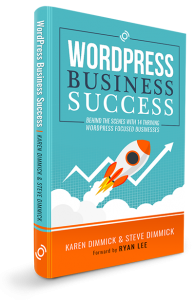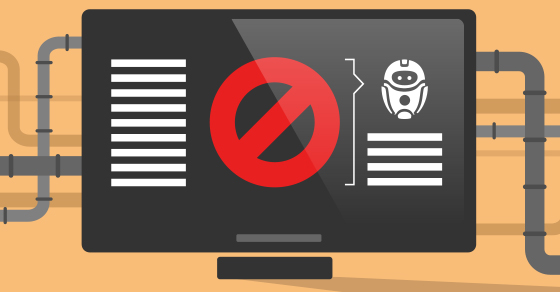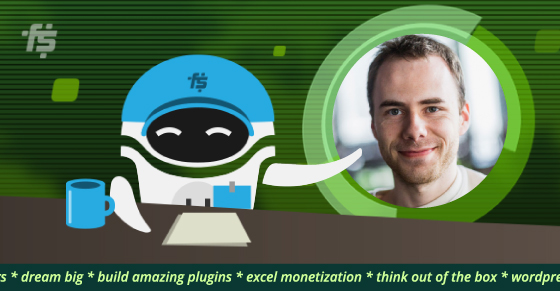|
|
We all know that having a buggy plugin or dropping the ball on support is a quick way to kill off your plugin business, but what other, more subtle mistakes can leave you wondering if you’ll ever make a successful business out of your plugins? Or worse yet, put you onto the maintenance treadmill, leaving you without any time, or energy, to actually create a viable business at all.
This article is a result of 14 interviews I conducted with some of the most successful business owners in the WordPress space.
Mistake #1: Giving Free Unlimited Support for Life
Whether you have a purely free plugin, a freemium plugin or even a premium plugin, one of the biggest mistakes you can make is providing free unlimited support for life.
We’ve actually seen this with plugins we use in our business as well as being told this by some of the people we interviewed. Some businesses have gone down the road of completely free support for life, only to realize that it was draining all their resources and just wasn’t sustainable. They quickly realized they either had to change their pricing system or close their doors.

As Adam Warner from FooPlugins says, “One of the struggles about a plugin business specifically, especially when you create free and paid products, is setting expectations for your users. We do support our free plugins, but our premium plugins’ support has to take preference. So we usually set a schedule a couple of times a week where we attend to the free support forums and do what we can, but we can only do so much without it affecting our revenue stream and our work hours.”
We do support our free plugins, but our premium plugins’ support has to take preference.
To get round the problem they provide premium support even for their free plugins because it allows their free customers to get the best support, while letting them balance the time they spend doing support with the income they get.
Mistake #2: Having Multiple Unrelated Plugins
As Robert Abela from WP White Security pointed out, most plugin developers have a lot of ideas for new plugins. The key thing though is to have a single niche that you target all your plugins towards.
Your niche can either be a vertical niche of a group of people like photographers, or a horizontal niche with a specific topic like security. Both types of niche have their advantages and disadvantages. Vertical niches are easier to sell to because everyone in them has the same type of business and therefore you can very quickly learn about their issues and create plugins around those. Horizontal niches tend to give you a wider audience that you are the expert for.

For instance, Pippin’s Plugins focuses on the selling of digital files. PluginResults, focuses on content protection. ManageWP focuses on site maintenance. FooPlugins focuses on photographers and agencies that work with photographers. Yoast is focused on website optimization. The list goes on. Basically, all the successful plugin businesses have a niche.
Without a niche, you end up spreading your support and new feature development too thin. You also lose the opportunity to consistently sell your new plugins to your existing customer base, because your plugin base is too diverse, so not every plugin has the chance to be useful to every customer.
Pippin has even reached the point where he is refining his focus and hoping to find new homes for his plugins that don’t fit into his niche, because while these other plugins are good, with a decent sized user base, as Pippin himself said, “They don’t get the attention they deserve.”
Mistake #3: Complex User Interface
This is actually a mistake Pippin says he sees people make a lot. It’s about getting too creative with your plugin interface.
You want to aim for simple and easy to use. So as you create, keep your end-user in mind. As Vova Feldman says, “If you build plugins for users, instead of developers, and create a great user experience, you’re going to have an audience.”
If you build plugins for users, instead of developers, and create a great user experience, you’re going to have an audience.
User experience trumps everything and if you focus on providing a great user experience, your plugin is going to rise to the top. So keep your user interface clean and simple, instead of having tons of options that most users will never use, that bloat your plugin and make it more complicated, not to mention harder to maintain.
Mistake #4: Having One Massive Plugin
Having one massive plugin instead of a light core plugin, with multiple extensions can be a huge mistake. You miss out on a lot of opportunities to monetize your work, as well as the opportunity for the end-users to only have the functionality they need so it’s faster on their website.
Sure, there are pros and cons to this add-on model, however, the majority of the successful plugin businesses I interviewed use this model to great effect.  For instance, MainWP has over 35 extensions that allow users to integrate their core plugin to other tools, or use some of their advanced functionality. WP White Security also follows this model with a variety of extensions.
For instance, MainWP has over 35 extensions that allow users to integrate their core plugin to other tools, or use some of their advanced functionality. WP White Security also follows this model with a variety of extensions.

An extreme example of this is WooCommerce, which have a free core plugin, with a large variety of paid extensions. They have progressed to the point where they have a marketplace that allows other developers to write extensions that they sell for a percentage of the price.
Keeping the functionality of your core plugin small has several other advantages as well.
- Firstly, you can create your MVP very quickly, which allows you to start getting user feedback so you can improve or pivot in a direction that will give your users exactly what they need.
- Secondly, plugins that solve one problem, instead of a variety of them, usually tend to be better at providing their solution. As Robert Abela says, “When you use specialized plugins, they are typically a bit better than the generalized plugins at what they do.”
- Thirdly, it makes for an easier sale. The initial purchase tends to be lower, and like McDonald’s and other businesses have found, selling an add-on or upsell to an existing customer is a lot easier than selling something to a new customer.
Mistake #5: Being Unaware of User Feedback

No one today would even consider launching a commercial website with no analytics installed. It’s the same with any type of business, on or offline. You even hear the sharks on Shark Tank saying, “You have to know your numbers.”
As Vova Feldman pointed out, Freemius Insights already exists and gives you all the data that is vital for a plugin business. So the final mistake is ignoring that feedback and data.
The fastest way to improve your plugins is to know what your users dislike about them, their suggestions for what they really wish your plugin did, and how your existing users are actually using them.
WordPress Business Success

I found some very interesting patterns, like the ones in this article, showing up across all the interviews I did for my book WP Business Success.








Comments
1 Comments